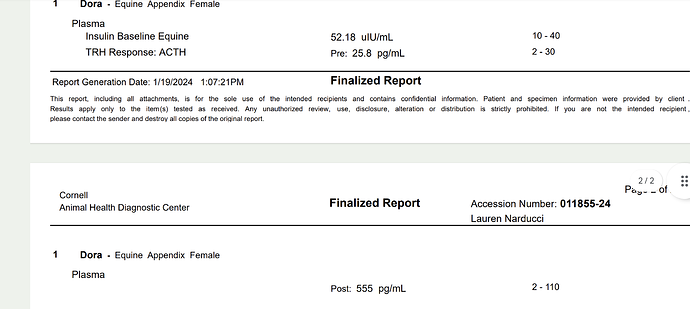I’d do the TRH test sooner and go from there. I can dig for my gelding’s original TRH test results from when he was diagnosed with PPID in December 2020 - the baseline value was positive and the post TRH stimulant test was overwhelmingly positive.
Prascend truly has a magical effect, or at least did for my horse, where all of a sudden he was bright, energetic, and a bit exuberant after a few days on 1/2 tab. He remains on 1/2 tab, and is doing amazing at 25 - however, I had requested that he be tested years before 2020, and the only vet I had access to at the time refused. I moved, had greater access to veterinary care, but the damage of untreated PPID had already been done. My horse developed EOTRH, has lost one tooth, has a few that will be extracted in the new year, and is clearly hurting.
I would do the TRH test and start medication if your horse is symptomatic ASAP. There are too many huge issues that can develop with untreated PPID, and I’d want to get ahead of it as quickly as possible.


 🤦🏻
🤦🏻
